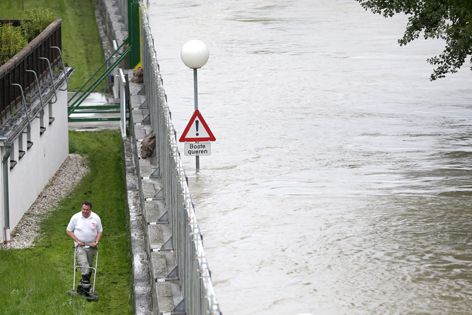The Biggest Climate Change Impact is on Water
Published on by Water Network Research, Official research team of The Water Network in Government
When governments from around the world submitted their Nationally Determined Contributions (NDC) plans for the Paris Agreement, they identified water as key to adaptation in 93 per cent of the plans.
 Responding to this, the UN Framework Convention on Climate Change (UNFCCC) organised an “action day for water” at the November 7-18 climate summit in Marrakesh, Morocco.
Responding to this, the UN Framework Convention on Climate Change (UNFCCC) organised an “action day for water” at the November 7-18 climate summit in Marrakesh, Morocco.
Recognising that water is fundamental for food security, human health, energy production, industrial productivity, biodiversity, and basic human needs, it ended up with a call to governments to pay more attention to water to provide solutions that will help implement the Paris Agreement.
Additionally many efforts to reduce greenhouse gas (GHG) emissions depend on reliable access to water.
The climate summit’s host government, Morocco, has put together a book that compiles successful attempts to adapt water availability to climate change impacts
Releasing the book, Charafat Afailal, Morocco’s Minister in charge of Water, said, “We need to realise what is at stake, since water insecurity leads to increased conflicts, tension between populations, and also provokes migration that threatens overall stability.”
Climate change is increasing the frequency and intensity of droughts, floods and storms, and is raising the sea level. All of this has to do with water.
Benedito Braga, president of the World Water Council, said at the event, “While humanity experiences increasing demographic and socioeconomic stresses, recent episodes of extreme climate around the world bring additional complexities in finding solutions to reduce these stresses. Water is one of the most impacted resources, but water also provides solutions to these challenges.”
There have been some successes in attempts to provide such solutions, notably in integrated management of the Hai River in China, strengthening of the new Mexico Metropolitan Organisation for urban flooding drainage, the joint adaptation project of European and Andean countries and providing a hydrological information system for the transboundary Congo river.
Roberto Ramirez de la Parra, president of the International Network of Basin Organisations, said, “Adaptation of water resources to climate change must be organised at the natural level of national or transboundary basin of rivers, lakes and aquifers, and mobilise all actors in the field, including local authorities, economic sectors and civil society to achieve a common vision to face the climate change challenges.”
Source: The Third Pole
Media
Taxonomy
- Water Scarcity
- Environment
- Climate Change
- Climate Change Resilience
- Water Management
- Integrated Infrastructure
- Flood management
- Flood
1 Comment
-
Climate change increases the frequency and intensity of droughts, floods and storms and increases sea level. All this is connected with water. "
Water, which has not been studied so far, has been created for billions of years. It is a living substance, the purpose of which is the transfer of substances to the conservation and development of biota. The way of its transformation in the circulation of water through the atmosphere, soil, biota. We interrupted this way. The increased volumes of artificial fumes closed the sky, changed atmospheric phenomena, led to natural disasters. All local actions to create a reduction in CO2 emissions, alternative energy sources, "green technologies", increased yield and diversification in the drier areas - all this flea fuss. Nature must return the taken away area, organic vapors. And to reduce artificial evaporation. Read more here: https://www.actascientific.com/ASAG/pdf/ASAG-02-0034.pdf. I offer cooperation in the proof of the Hypothesis.Изменение климата увеличивает частоту и интенсивность засух, наводнений и штормов и повышает уровень моря. Все это связано с водой.»
Вода, которая не изучена до сих пор, создавалась миллиарды лет. Это живая субстанция, назначение которой в переносе веществ сохранении и развитии биоты. Путь ее преобразования в кругообороте воды через атмосферу, почву, биоту. Мы прервали этот путь. Усиленные объемы искусственных испарений закрыли небо, изменили атмосферные явления, привели к стихийным бедствиям. Все локальные действия по созданию снижению эмиссии СО2, альтернативные источники энергии, «зеленые технологии», усиление урожая и диверсификация в более сухих районах - все это блошиная возня. Природе надо возвращать отнятые площади, органические испарений. И снижать искусственные испарения. Подробнее здесь: https://www.actascientific.com/ASAG/pdf/ASAG-02-0034.pdf. Предлагаю сотрудничество в доказательстве Гипотезы.